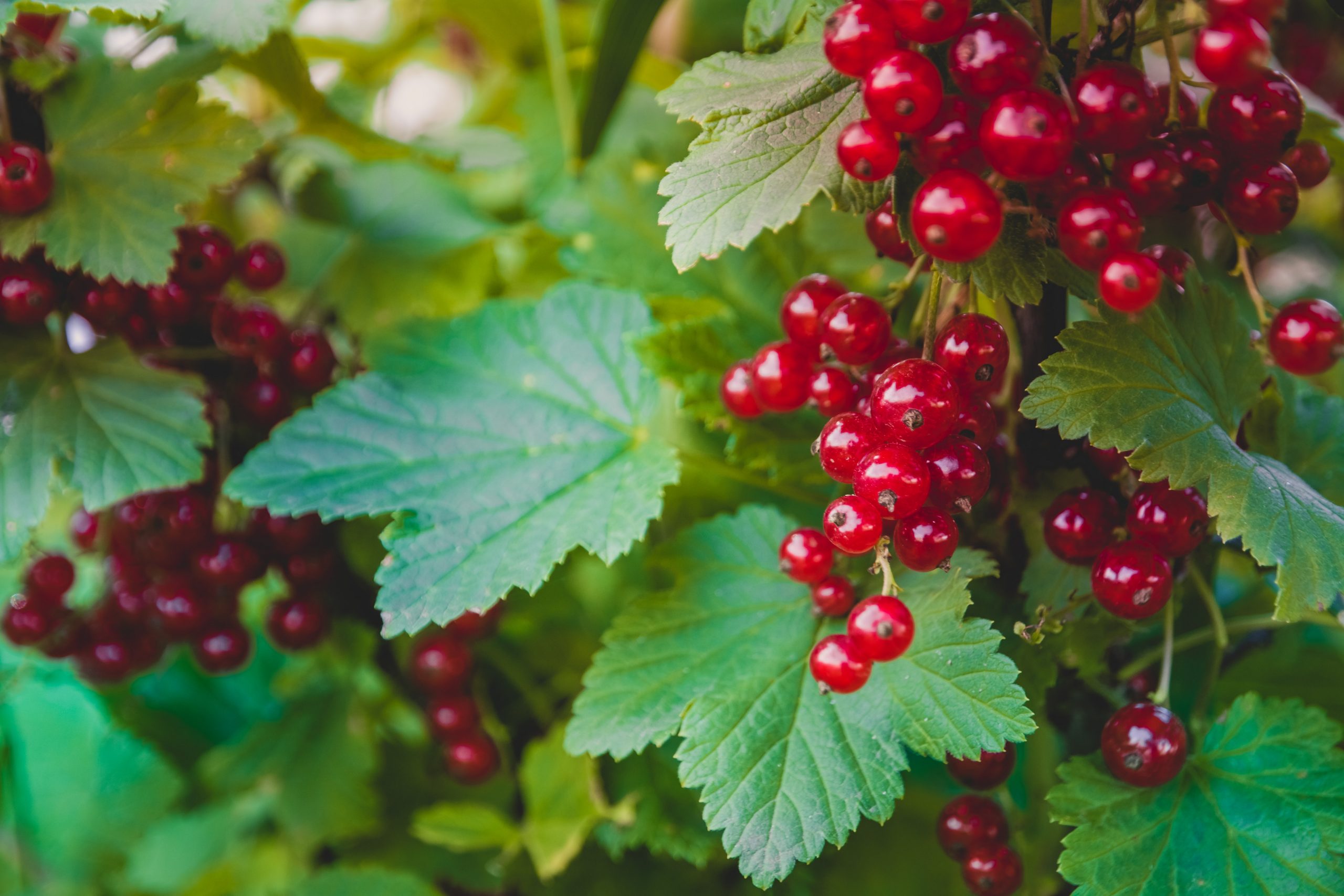Last Updated on April 10, 2024 by Real Men Sow
Where to Plant Blackcurrants
Blackcurrants can tolerate poor drainage but obviously prefers well-drained soil with plenty of nutrients and a shelter from strong winds. Places prone to frost pockets should also be avoided, if you have no place other than that, choose frost-resistant varieties. Or simply cover them with frost protection fleece in April to protect its flowers.

How to Plant Blackcurrants
You only got one chance to attend to the soil where Blackcurrants are planted. That is why it’s recommended that you prepare the place about 4 weeks before planting the Blackcurrants and consider a step-by-step guide. Remove any perennial weeds and add a generous amount of well-rotted manure. Remove any deep-rooted weeds because once it comes around the stems of your Blackcurrants, it will become impossible to remove them.
Bare Root Currants are planted from October to November and February to March too. Potted plants can be planted at any time of the year. They should have 150cm spacing between the bushes, meaning they should be 150cm apart at all sides.
The hole you’re going to put the root ball into should be twice the diameter of the said root ball (usually 1.5ft). The stem should be 6cm deep, this is because deep planting would grow numerous shoots that will eventually become new fruit-bearing branches.
Add more well-rotted manure to the soil before covering the root ball. Gently firm the soil to the ground, soak it with water to let the soil settle around the roots.
How to Prune Blackcurrants
Initial Pruning: after planting, prune all shoots to approximately 5cm above the soil surface. This is the process called hard pruning, which delays fruiting until the following year and creates a better bush in the long run. Doing so will help increase fruiting stems too.
Yearly Pruning: November to March is the pruning season. Delaying pruning until March would help the plant heal its wounds quickly as the bush comes out from being dormant in April. Pruning in winter would only leave the plant exposed to elements due to it being dormant and does not have the capacity to heal itself.
Remove any old wood yearly to keep the bush productive. The old wood has less productivity and is spotted due to its color which is darker than pale young wood. They are also thicker, therefore, making them easier to spot. Cut the old wood as close to its origin using a horizontal cut to prevent rainwater from collecting on the wound.
The cuts should be outward-facing to encourage new growth going outwards. It’s also important to remove any weak or diseased-looking wood, along with any low or horizontal branches to make harvesting easier and avoid the fruits that may touch the ground to spoiling.
Seasonal Care For Blackcurrant Bushes
The soil around the plant should be weed-free, do this by hand weeding and mulching. Hoeing would only risk affecting the Blackcurrants’ shallow roots. Simply do mulching by adding a thick layer of well-rotted manure and/or garden compost.
Growing Red and White Currants
Red and White Currants have the same growing conditions as Blackcurrants. Their spacing should be 5ft between plants, however, they can also be grown as a single, double, or triple cordon with 1.5 ft, 3ft, and 4ft spacings respectively.
The most common method is growing them as bushes. It’s the easiest to grow and gives the highest amount of crops.
They prefer well-drained soil that allows them to enjoy full sun since they are less waterlogging and shade tolerant. By April, they should be draped over with fleece or sacking to protect its flowers from frost.
How to Plant Red and White Currants
Red and White Currants are planted at the same level as the root ball, and not deeper. You’ll be able to see the transition from darker to lighter wood on its main stem that indicates the old soil level.
Blackcurrants aren’t the same as Red and White Currants because their bushes should be single-stemmed with an open bush shape on top, unlike blackcurrant that needs more shoots coming from their base.
Pruning Red and White Currants
Initial Pruning: Remove suckers, the new stems that are growing from the base of the main stem of the root ball. The rest of the branches should be cut to approximately half their length with a cut upward facing to encourage growth upwards.
Yearly Pruning: An Open ‘Goblet’ is the ideal shape for Red and White Currants that would allow light in and air to circulate. Prune any stems growing towards the main stem and any lateral branches growing in. Dean and dying wood should also be pruned to prevent unproductiveness and possible diseases. Branches that are 3 or more years old should also be pruned due to their decreasing productivity. Hanging branches growing outward from the base of the plant will only make fruits grown through them spoil because it’s too low, therefore, remove them too.
Seasonal Care for Currants
The soil around the plant should be weed-free, do this by hand weeding and mulching. Hoeing would only risk affecting the red and white currants’ shallow roots. Simply do mulching by adding a thick layer of well-rotted manure and / or garden compost.


